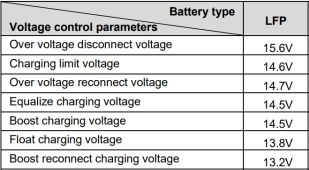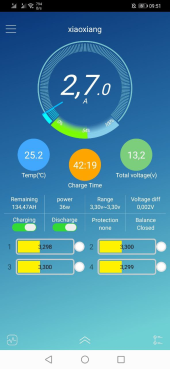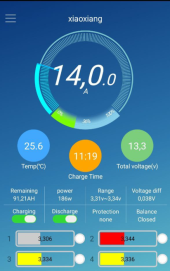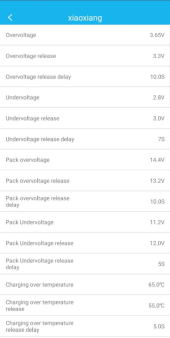RaVaeL
New Member
- Joined
- Mar 19, 2022
- Messages
- 12
Hi,
I'm having trouble with my installation:
- Tracer6415AN 60A
- 3x 375W solar panels
- 2x 250 AH 12V LiFePO4
I have a request for help with settings, my trouble is that having the battery about 70% charged, after 180 minutes of boost cycle, the solar charger goes to float and does not go back to boost. I have to turn it off at the fuses and then it runs for another 180 minutes. It goes about 50A with 14.4 volts from sun.
My settings currently are as follows:
Over Voltage Disconnect: 14,5 V
Charge Limit: 14.4 V
Over Voltage Reconnect: 14,0 V
Equalization Charge: 14.4 V
Boost Charge: 14.3 V
Float Charge: 13.6 V
Boost Reconnect: 13,0 V
It seems to me that I should increase the Float charge to 13.8/13.9 V. I'm afraid that at 100% charge, at this voltage the BMS will disconnect periodically due to overcharging. I would prefer the Tracer to disconnect the charge and not the BMS.
I'm having trouble with my installation:
- Tracer6415AN 60A
- 3x 375W solar panels
- 2x 250 AH 12V LiFePO4
I have a request for help with settings, my trouble is that having the battery about 70% charged, after 180 minutes of boost cycle, the solar charger goes to float and does not go back to boost. I have to turn it off at the fuses and then it runs for another 180 minutes. It goes about 50A with 14.4 volts from sun.
My settings currently are as follows:
Over Voltage Disconnect: 14,5 V
Charge Limit: 14.4 V
Over Voltage Reconnect: 14,0 V
Equalization Charge: 14.4 V
Boost Charge: 14.3 V
Float Charge: 13.6 V
Boost Reconnect: 13,0 V
It seems to me that I should increase the Float charge to 13.8/13.9 V. I'm afraid that at 100% charge, at this voltage the BMS will disconnect periodically due to overcharging. I would prefer the Tracer to disconnect the charge and not the BMS.










